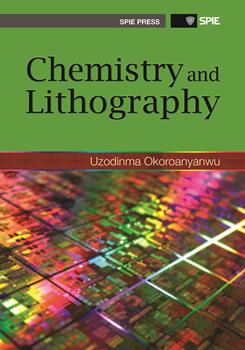|
Charged particle lithography comprises lithographic patterning techniques in which the imaging action is mediated by charged particles such as electrons (as in electron-beam lithography) and ions (as in ion-beam lithography). Some of the key concepts and methods employed in these lithographies are similar to those of optical lithography. However, there are some distinct differences between each of the lithographies that make up charged particle lithography, as well as between them and those that make up optical lithography. In the following sections, we explore these differences in more detail, from the point of view of how they are implemented as a lithographic strategy. We start with electronbeam lithography and end with ion-beam lithography. 15.2 Electron-Beam Lithography Electron-beam lithography (EBL) refers to a lithographic patterning technique in which a focused beam of electrons is used to expose and pattern resist-coated semiconductor substrates as part of a number of steps used in the fabrication of IC devices. Its introduction into IC fabrication dates back to 1957.1 Today, electron-beam lithography is used primarily in fabrication of masks used in optical lithography and x-ray lithography. It is also used in low-volume fabrication of exploratory IC device layers with extremely small features; it has also found application in nanotechnology research. Like photons, electrons exhibit particle and wavelike properties, but their wavelength (0.012-0.024 nm, corresponding to 50-100-keV of energy for electrons used in EBL) is three orders of magnitude shorter than the wavelength of UV radiation used in optical lithographic exposure tools, and hence their resolution is not limited by diffraction. Only features with atomic-scale dimensions are able to diffract electron beams. Electron-beam lithography therefore has the potential for extremely high resolution. In fact, features as small as 10 nm have been successfully fabricated with electron-beam lithography. In addition, electron beams image with extremely large depth of focus, providing relief from one of the most challenging problems of optical lithography. |
|
|


